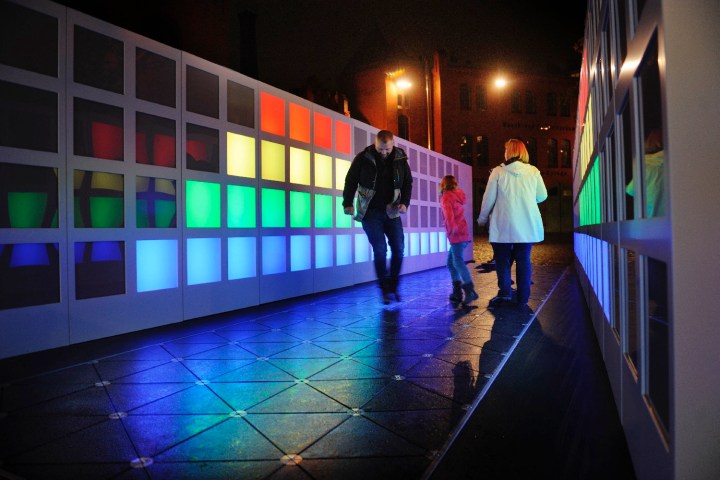
“The generator technology is electromagnetic, like a bicycle dynamo, and converts the kinetic energy from your footstep into off-grid electricity,” Archie Wilkinson, project lead and head of Pavegen Live, told Digital Trends. “As you step on the Pavegen floor, the top surface flexes by 5-10mm, creating a rotation in the electromagnetic generators below. Each step produces around 3 joules of energy, which is about 5 watts for the duration of each step. The walkway has already generated over 100,000 joules of energy since launch on Wednesday, October 10.”
In addition, the walkway contains Low Power Bluetooth beacons which can communicate with a special app to record the experience. Individual unique moments are captured by a photo pod at the end of the array, and then shared with users as a GIF.
It’s a fun, attention-grabbing project, but it also serves as a glimpse at how future smart cities may be able to harness sustainable energy from new sources — even something as innocuous as people walking on the sidewalk. That’s exactly what’s happening at Du Pont Circle in Washington D.C., where three Pavegen walkways are currently converting the footsteps of the roughly 10,000 people who walk in the area daily into storable electricity, which is then used to light the space at night.
“We’re also producing data on the energy output, helping the city to understand footfall in this busy commuter zone,” Wilkinson continued. “Technology alone won’t make cities smarter, it’s about changing behaviors. We have recently created a digital platform that rewards interactions with Pavegen surfaces via Bluetooth beacons, making your commute transactional. We can literally reward people for their footsteps with gifts, discounts, and opportunities, for example, provided by brands or causes that align to a smarter, more sustainable future.”
Receiving prizes for walking, instead of driving, to work? Yep, we’re on board with that!


